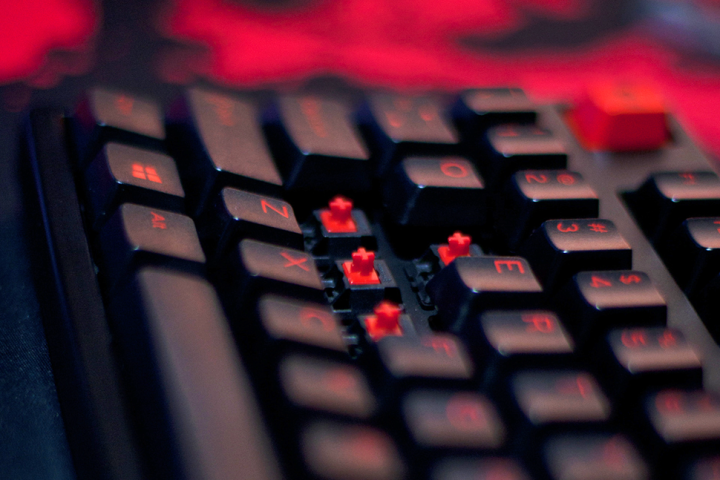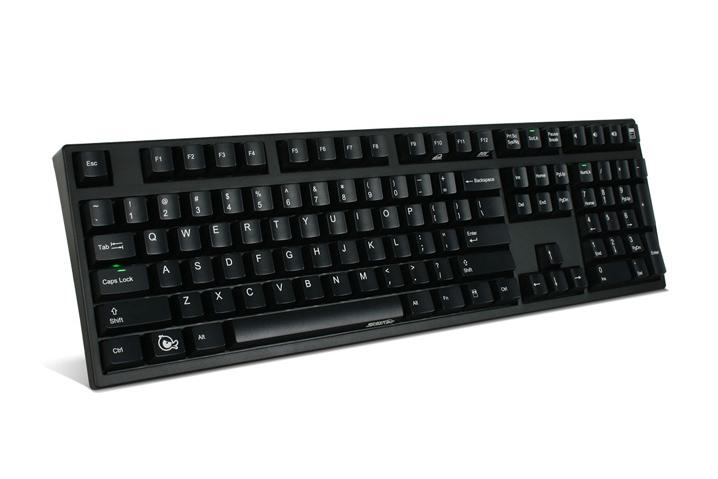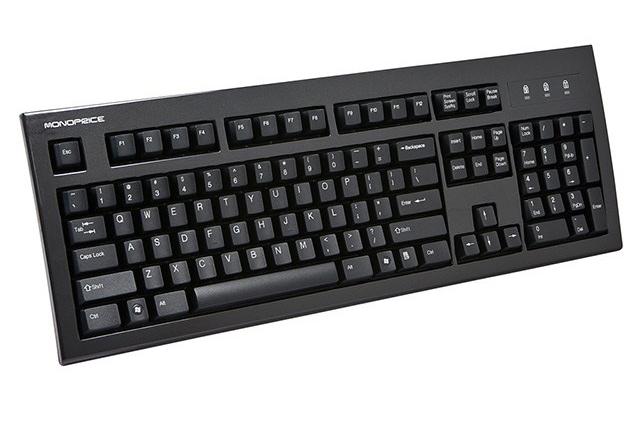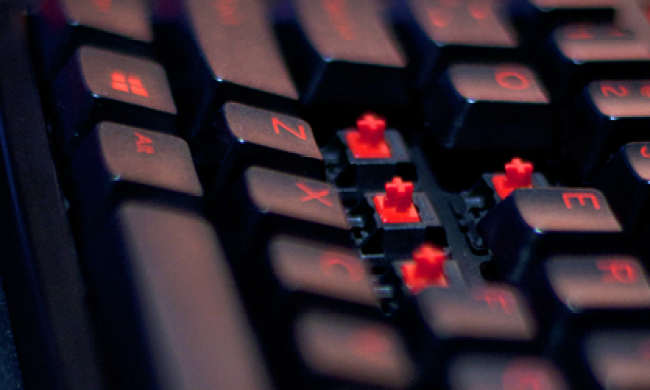
There was a time when virtually all keyboards relied on hefty mechanical switches rather than the flimsy rubber domes that lurk beneath most modern alternatives. Massive, spring-driven monstrosities like the IBM Model M were well-loved by their users, but their high price tags made them impractical, as computers themselves became more affordable.
For a time, the mechanical keyboard was nearly extinct, with its legacy tended to only by the most dedicated PC enthusiasts. Now, that narrative has changed.
New production methods have lowered the costs associated with mechanical keyboards, making them quite affordable. With that in mind, here’s why you should ditch your cheap rubber keys, and embrace a mechanical keyboard instead.
What’s a switch, and why is going mechanical better?
Describing a mechanical keyboard as such means everything to enthusiasts, but nothing to those who are unfamiliar with how keyboards are built. Here’s the short version of that story.
The mechanism that translates a key press into the input that your PC recognizes is called a switch. All switches work by completing an electrical circuit when a key is sufficiently depressed. What differs when it comes to mechanical keyboards is the technique used to provide resistance to each key, which keeps the circuit open until you depress it.
What differs when it comes to mechanical keyboards is the technique used to provide resistance to each key.
Most keyboards, including those that are bundled with desktop computers, use what’s known as a dome switch. Each key sits on top of a rubber dome which collapses when the key is struck. This kind of switch is cheap to produce, but otherwise has few benefits. The thin rubber often used to build these switches degrades quickly, provides a spongy feel when depressed, and attracts a great deal of dirt and dust.
A mechanical switch, by contrast, usually uses a metal component to provide mechanical resistance. Springs are common, but other methods are sometimes used too. This kind of switch lasts for a very long time (Cherry switches, which are a common variety, can withstand roughly 50 million keystrokes), and provides a more dependable, refined tactile feel that makes touch-typing easier. Most varieties are easy to clean too, because these switches are more self-contained, and allow for easier removal of individual keys.
Not just for gamers anymore
The resurgence of mechanical in the consumer keyboard market began with gamers, as is so often the case when it comes to PC hardware in general. Not all mechanical switches are great for games, but some are, and the more self-contained design of each switch gave keyboard builders the chance to get creative with macro keys and other extras adored by PC gamers.
However, there’s a wide variety of relatively affordable options that are well-suited for people who just want an enjoyable, yet inexpensive mechanical keyboard. Top choices include Rosewill’s STRIKER RK-6000, Ducky’s Zero DK2108, and Monoprice’s generic mechanical keyboard. All of these are available for around $60 or less, and provide the benefits you’d expect from a mechanical keyboard, albeit without some fancier features, like back-lighting.
- 1. Rosewill STRIKER RK-6000
- 2. Ducky Zero DK2108
- 3. Monoprice Mechanical Gaming Keyboard
Skeptics might view the “affordable” $60 price tag critically. This is about double the price of a decent rubber-dome keyboard, and spending any amount of money may be difficult to justify if you’re still using the free keys that came with your desktop. This is an understandable point – and upgrading probably isn’t worthwhile if you use your PC for only a half-hour each day. For those who work and/or play on a PC however, a better keyboard is a boon that provides a more accurate and comfortable experience.
What you need to know
Buying a mechanical keyboard isn’t difficult. In fact, you could probably pick up any model and be happy with what you get. They’re well-built almost by default, and even the budget picks can last for many years.
More discerning buyers will want to know about the switch that’s used in their keyboard though, as each type provides a distinct feel and sound. Here are the most common flavors out there.
Cherry MX Black and Cherry MX Red: These common switches are linear, which means they have a similar feel throughout the keystroke, and provide less tactile feel. The black variant is stiff, and is preferred by people who hate it when they hit keys by accident, while the red is very light and suited for users who rapidly use keys in quick succession (like gamers).

Cherry MX Blue: This switch provides significant tactile feel, and audible feedback when depressed. These traits make it a good choice for marathon typing sessions. Audible feedback translates to noise for some people, however, so this switch can annoy users who prefer peace and quiet.
Cherry MX Brown: A sort of hybrid between Blues and Reds, this switch provides some tactile feedback, and activates early in the keystroke. Many people like this design because each keystroke requires little effort. While the strain of depressing a key may seem minuscule, slightly less effort spaced out over thousands of movements can mean the difference between consistent comfort, and a cramped hand.
Buckling Spring: IBM’s original Model M used this switch, which relies on a spring that loads unevenly and eventually buckles, creating noise and tactile feedback. Today, this switch is found in Unicomp’s keyboards. Old-school typists love this switch, but its noise and heavy resistance can wear you out after many hours of use.

Topre: This switch combines a thick rubber dome with a conical spring, a design which provides the reliability and tactile feedback of other mechanical switches, but retains the smooth feel of a rubber dome design. Though they provide some audible feedback, Topre keyboards are usually quiet compared to their counterparts.
Of these switches, the Cherry MX Black, Blue and Brown are the ones that are most commonly found on the market, but the others are also used in a variety of keyboards.
If you’re wondering what’s up with the use of “Cherry” in the names, it’s actually a brand. Cherry makes these switches, which other companies buy and use for their keyboards. This distinguishes them from Buckling Spring and Topre, which may be implemented differently by different manufacturers.
Why not mechanical?
We’ve already said plenty about which mechanical keyboards are great. Expenses aside, they simply provide a better experience. There are, however, a couple of reasons why you might not want to go with the mechanical route.
Noise is one of the biggest complaints associated with mechanical keyboards. Though noise levels vary significantly between switches, even the quietest mechanical switch is noticeably louder than a cheap, rubber-dome based keyboard. Typists often find the noise pleasing, because it provides additional feedback, but people who share space with them don’t always feel the same way. A late night novelist hammering away at a mechanical keyboard may annoy someone sleeping in an adjacent room, for example.
These keyboards are also bulky, though there are a few exceptions. You’ll need a nice, spacious desktop area, and you’ll almost certainly need to buy a palmrest (if the keyboard lacks one) and/or a keyboard tray that can be adjusted to the appropriate height.
Conclusion
A mechanical keyboard is a must-have tool for anyone who uses a computer as more than a plus-sized portal to Facebook or Netflix. Switching to mechanical can increase typing speed and accuracy while improving comfort, particularly if you take the time to pick a switch that suits your likes and dislikes.
If you ditch your rubber dome dime-store keyboard, and go mechanical. You’ll be glad you did.





